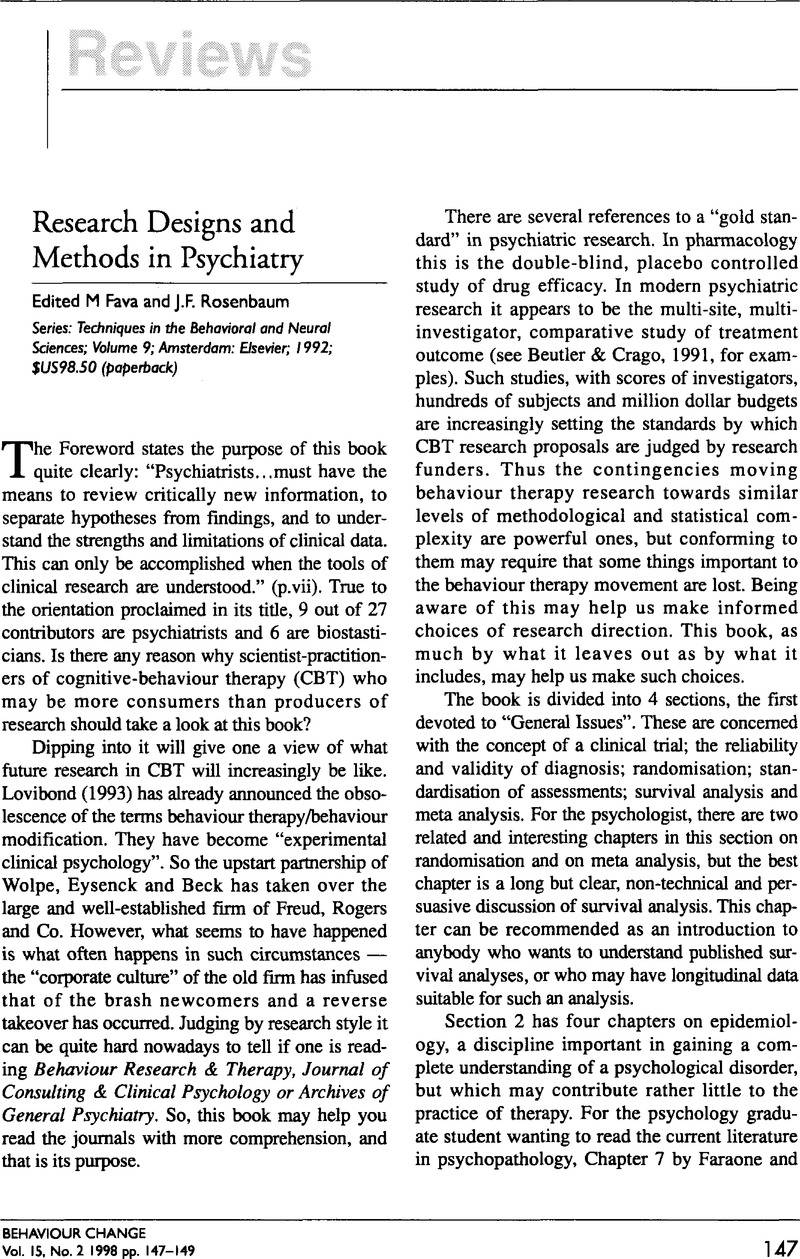No CrossRef data available.
Article contents
Research Designs and Methods in Psychiatry Edited M Fava and J.F. Rosenbaum Series: Techniques in the Behavioral and Neural Sciences; Volume 9; Amsterdam: Elsevier; 1992; $US98.50 (paperback)
Review products
Research Designs and Methods in Psychiatry Edited M Fava and J.F. Rosenbaum Series: Techniques in the Behavioral and Neural Sciences; Volume 9; Amsterdam: Elsevier; 1992; $US98.50 (paperback)
Published online by Cambridge University Press: 06 October 2014
Abstract
An abstract is not available for this content so a preview has been provided. Please use the Get access link above for information on how to access this content.

Information
- Type
- Reviews
- Information
- Copyright
- Copyright © The Author(s) 1998
References
Barlow, D.H., Hayes, S.C., & Nelson, R.O. (1984). The Scientist Practitioner: Research & Accountability in Clinical & Educational Settings. New York: Pergamon.Google Scholar
Beutler, L.E., & Crago, M. (1991). (Eds.). An Integrated review of Programatic Studies. Washington, DC: American Psychological Association.Google Scholar
Lovibond, S.H. (1993). The development of behaviour therapy in Australia. Behaviour Change, 10, 3–12.Google Scholar
Rose, S., Kamin, L.J., & Lewontin, R.C. (1984). Not in our genes: Biology, ideology and human nature. Harmondsworth: Penguin.Google Scholar
Romans-Clarkson, S., Walton, V., Herbison, P., & Mullen, P. (1990). Anxiety and depression in urban and rural New Zealand women. In McNaughton, N. & Andrews, G. (Eds.), Anxiety. Dunedin, NZ: Otago University Press, (pp. 19–30).Google Scholar

